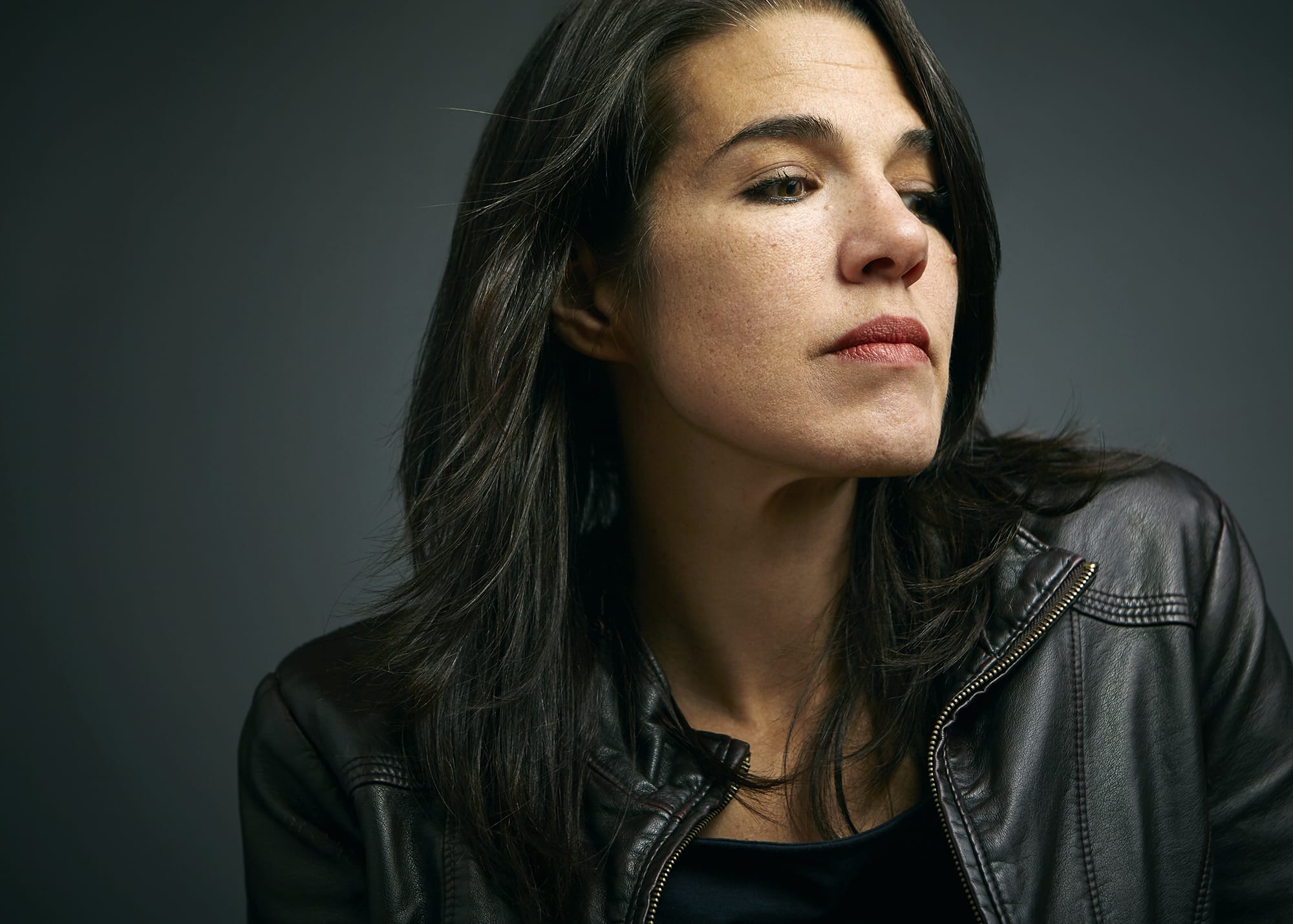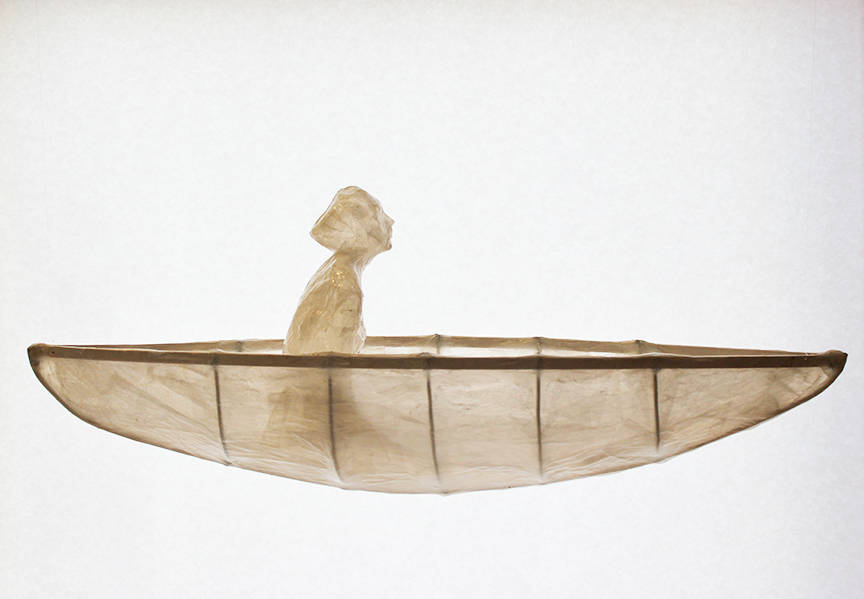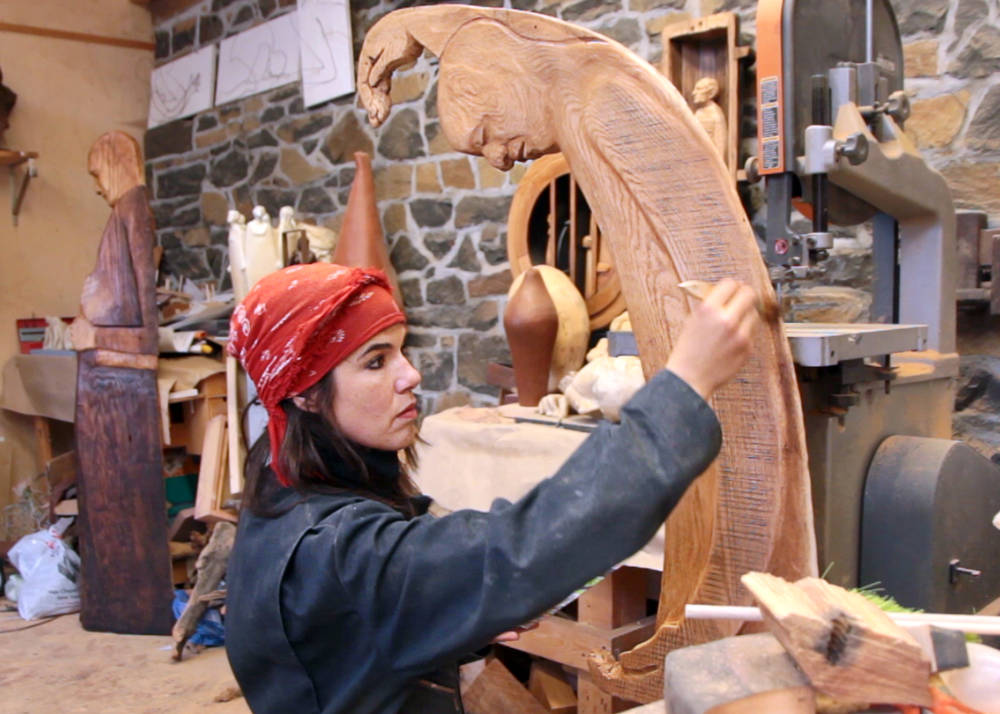Did you go to school for sculpture? I took two years of sculpture at the University of Michigan, but I got my degree in cultural anthropology, with a minor in sculpture. I was really more focused on social work, sociology and anthropology, and in the end those interests have melded together in a very organic, beautiful way with my art.
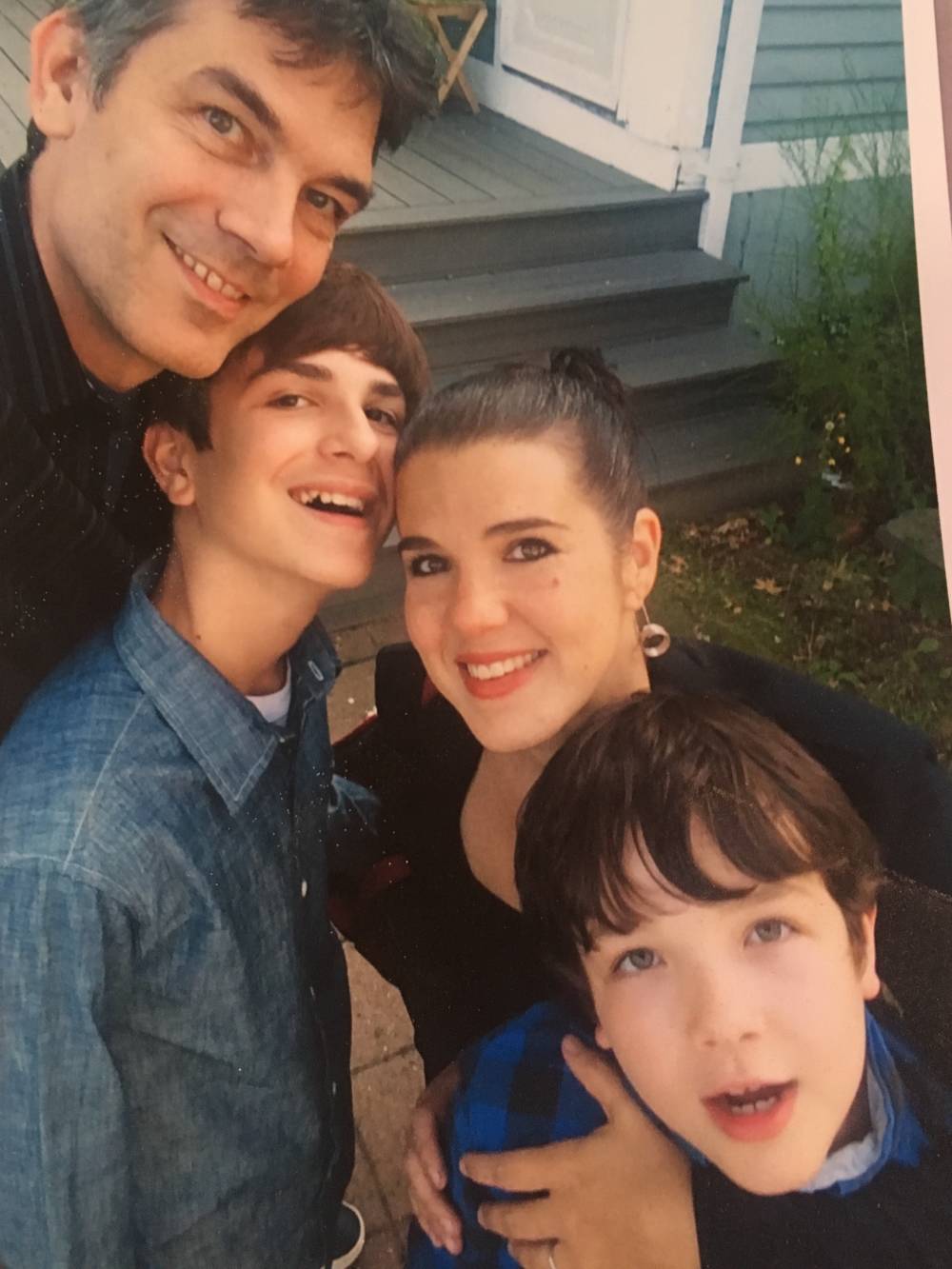
What made you interested in sociology? Since I was a young girl, I was always active in organizations like Amnesty International. It was a very natural, intuitive part of myself to want to be a part of other people's lives. I come from a big family, and we moved around a lot, about every two years. Because of that I was introduced to different neighborhoods, different ways people were living in the United States, and because I’m kind of a sensitive human being, I absorbed that and wanted to be a part of making the world a stronger place. I didn’t know it was going to be through art, which I discovered about 20 years ago.
"As soon as I tapped into that part of myself that was truthful and honest, doors started opening up left and right."
I was a social worker with the Department of Children and Family Services in Chicago for about three and a half years, and that was super heavy. Beautiful, but really taxing on the human spirit. My sister is a professional dancer, and one day when I was with her I had a nervous breakdown. She said, Susan, be an artist, 100 percent, just do it. This was before children, and I thought, yeah, of course. This is what I’m naturally gifted in. I wondered, can I still be a part of people's lives and influence young people, but do it in a way that is natural to me? Not through bureaucracies? And it exploded. As soon as I tapped into that part of myself that was truthful and honest, doors started opening up left and right. I worked my ass off, but I think any artist knows what it feels like once you decide to surrender.
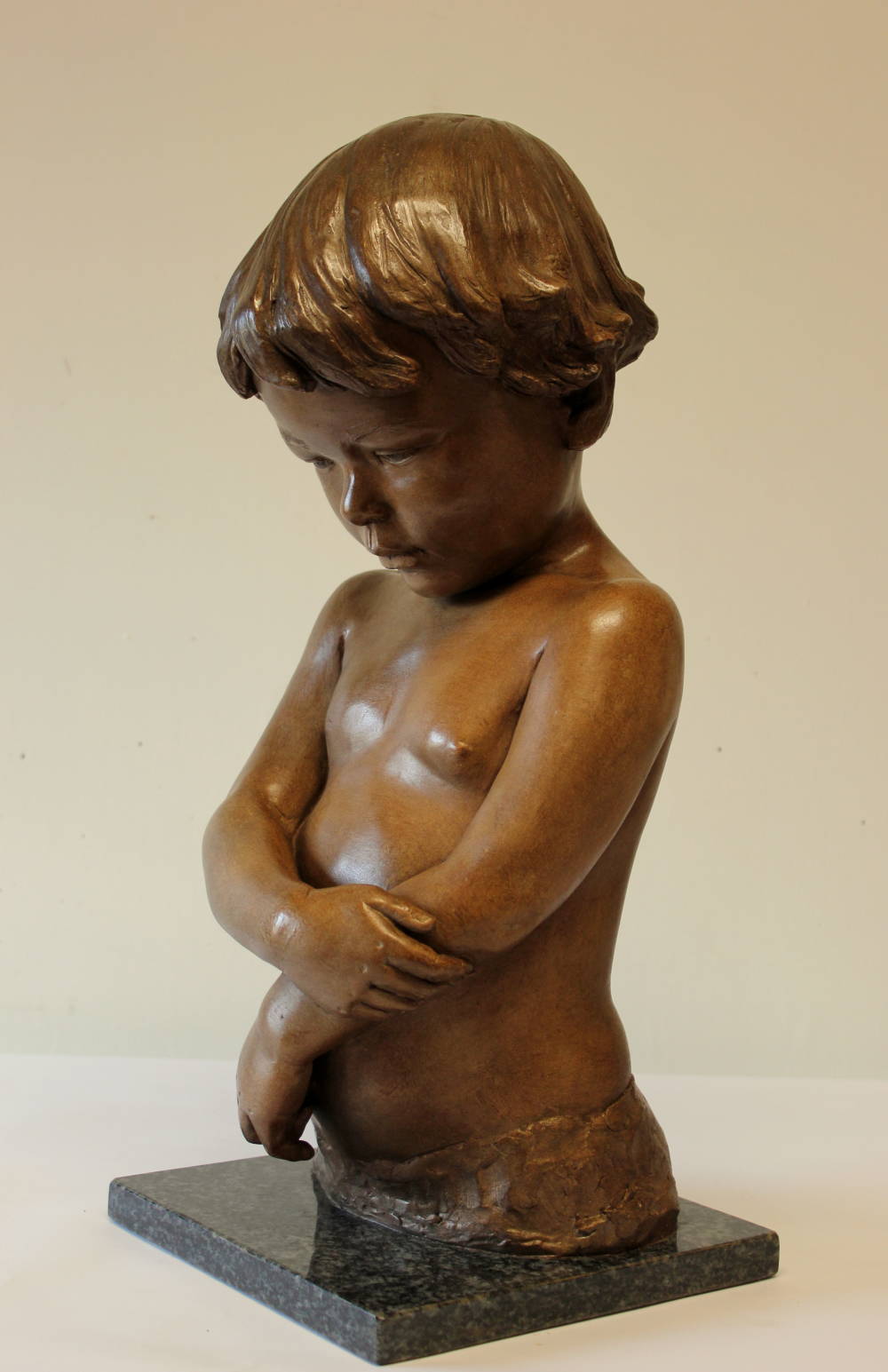
Why sculpture? I was always a visual artist as a kid. It was my outlet. And even when I was a social worker and studied other things, it was always a part of who I was as a young woman. And then I just kind of randomly took a course when I was 19 because it fit into my schedule, and it was one of those explosive things. I took the class and I was was like, “Holy cow! I get this!” Sculpture felt so natural. It was incredible. It rocked my world, without a doubt. And it’s how I met my husband. My whole world blew up with sculpture.
When you initially transitioned from social work to being a full-time artist, how did you make that work? I realized initially, as I’m sure many artists can attest, the stable income came with teaching art. And then, you slowly build up your resume and your CV and you start to build a body of work to then apply for exhibitions. So initially, I taught, I taught, I taught.
I would teach in art programs in the public schools in Chicago. I taught evening classes with adults in figure sculpture. Any opportunity, I ate it up. And I did a lot of shit jobs too. Little hustle here, little hustle there. I gave endless sculptures away to organizations that I believed in to try to raise my resume. I knew all of this was part of the building process for visual artists, especially women. Especially in sculpture, it’s not a very balanced art form, so to speak, gender wise.
It’s so important for people like you to tell that story that goes, “I’m an artist, and a woman, and I have a family” to pave the way for future artists. How long were you working as an art teacher/artist, before having a family? I would say probably at least six years. I remember getting married, and I refused to change my last name. My name was already written on hundreds of sculptures and I didn’t see the value in changing it. I had already started to establish my career.
When I had my first son, Olivier, who is now 13 and a half, it was mind blowing. I don’t think I went through postpartum depression, but talk about an identity shift! It was a constant battle of trying to find balance in my life, and a lot of themes of my work began to revolve around that feeling. There was a theme of women, stretching their bodies abstractly, falling into themselves with just being overwhelmed with the sheer nonstop lifestyle. I refused to let go, because I knew if I let go, especially early on, I would lose myself. I would lose a huge part of my identity.
Now I have a nine year old, Leo, and Olivier is 13, and to this day we speak about it openly. I say to my boys, “You know, it’s important for you to see your mom doing what she needs to do. By doing this, I am taking care of you and I’m taking care of my community in the ways that I know how.” They need to see it. It’s not just words. They need to see that I come home exhausted sometimes. They need to see that this is not just a pretty, fun hobby. This is real work. A real, meaningful, dedicated vocation.
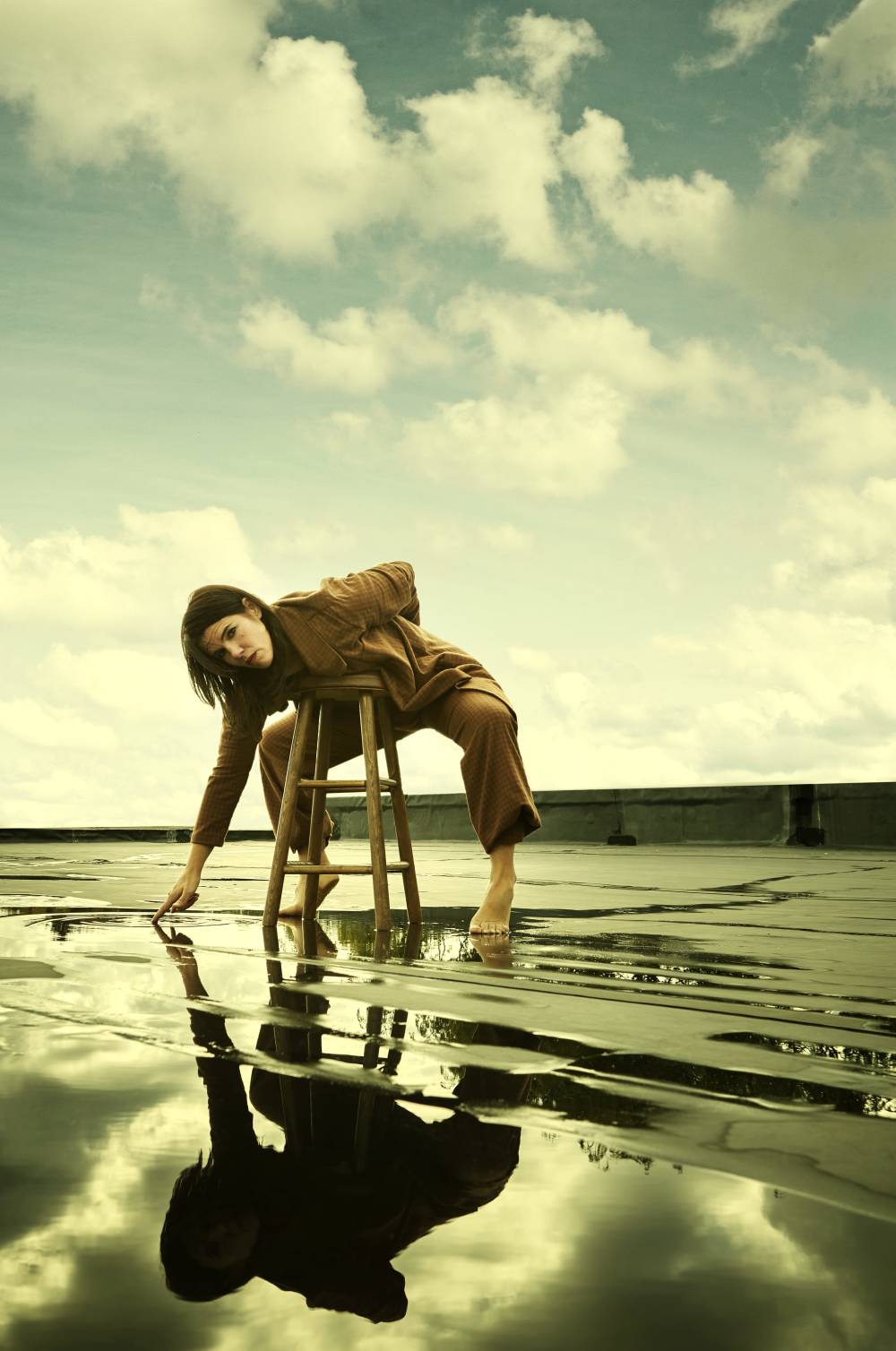
I speak to young groups a lot, because I want to emphasize the amount of dedication and work it takes, woman, man, whatever, because it is punching in, day in and day out. It’s not the stereotypical artist thing, sipping coffee all day. We are working hard. And mothers work double hard. I will be 46 in a few months, and I’ve found that I don’t know how to stop sometimes. I’m on all the time. I’m not willing to give up my career and my creative spirit and I’m not willing to give up on my beautiful babies. They are connected in a profound way and if I lose one or the other, I am not whole.
I think it’s bullshit that there isn’t more assistance, or compassion even, for working mothers who are independently employed the way artists are. It is a real struggle. And if you don’t have a husband or a partner who believes in who you are, it’s even worse. My husband took my sculpture class years ago. That’s how we met. He knows I take my claws and dig in, and I am not going to let go. I am grateful that he understands that.
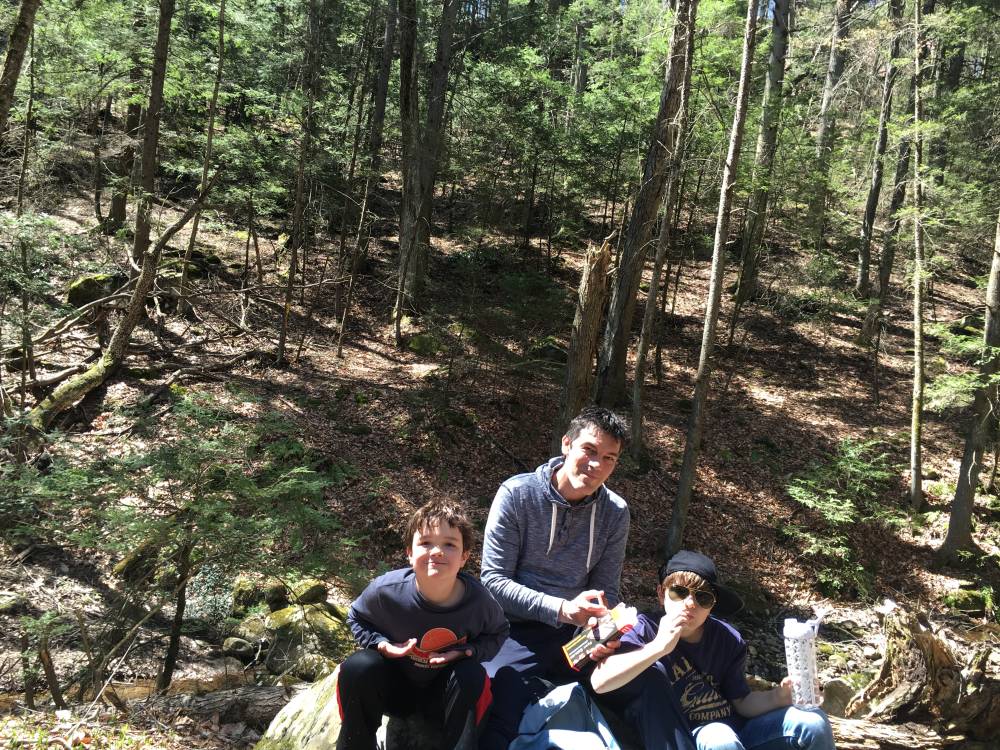
When your babies were small, what did your art practice look like? It was very fragmented, as it is now. Almost immediately I had to learn to go into the studio and produce work, for example, 9 o’clock to noon. I always made sure I had a separate space. It was something I had worked hard to have before I started a family, so I wasn’t going to let that go. I was paying my own bills. I was paying my studio rent.
"When they were babies, it was those little chunks of time in the morning. I would go in there hungry and desperate and full of joy and full of energy…"
When they were babies, it was those little chunks of time in the morning. I would go in there hungry and desperate and full of joy and full of energy, and I would get used to producing under that time frame. It’s been 13 and a half years since I’ve had to learn how to do that, and I’ve adapted to it. The fragmentation is extremely taxing, as every mother knows, even non-artist mothers. But if it’s that important to you, you find a way. “That’s going to get done before I leave the studio. I need to do this and that when I return from picking him up from daycare.” Now that the kids are older, they are in school until about 3 o’clock, and the older one can stay at home and do his homework for an hour and a half after school.
I have felt guilty. The amount of guilt that mothers put themselves through, and artist mothers in particular, is real. Somehow we’re not validated, our form of work is not legitimate enough, because it’s not bringing in enough income immediately, or it sounds foo-foo. You still have to demand that space, and tell your kids that for the sanity of this family, you are going to go to after school care because mom needs a little bit longer in the studio. This has evolved over time for us. When they were infants it started with three hour chunks of time. I’d put them to bed feeling so desperate that I’d go to work on my dining room table at night. I was so tired, all the time.
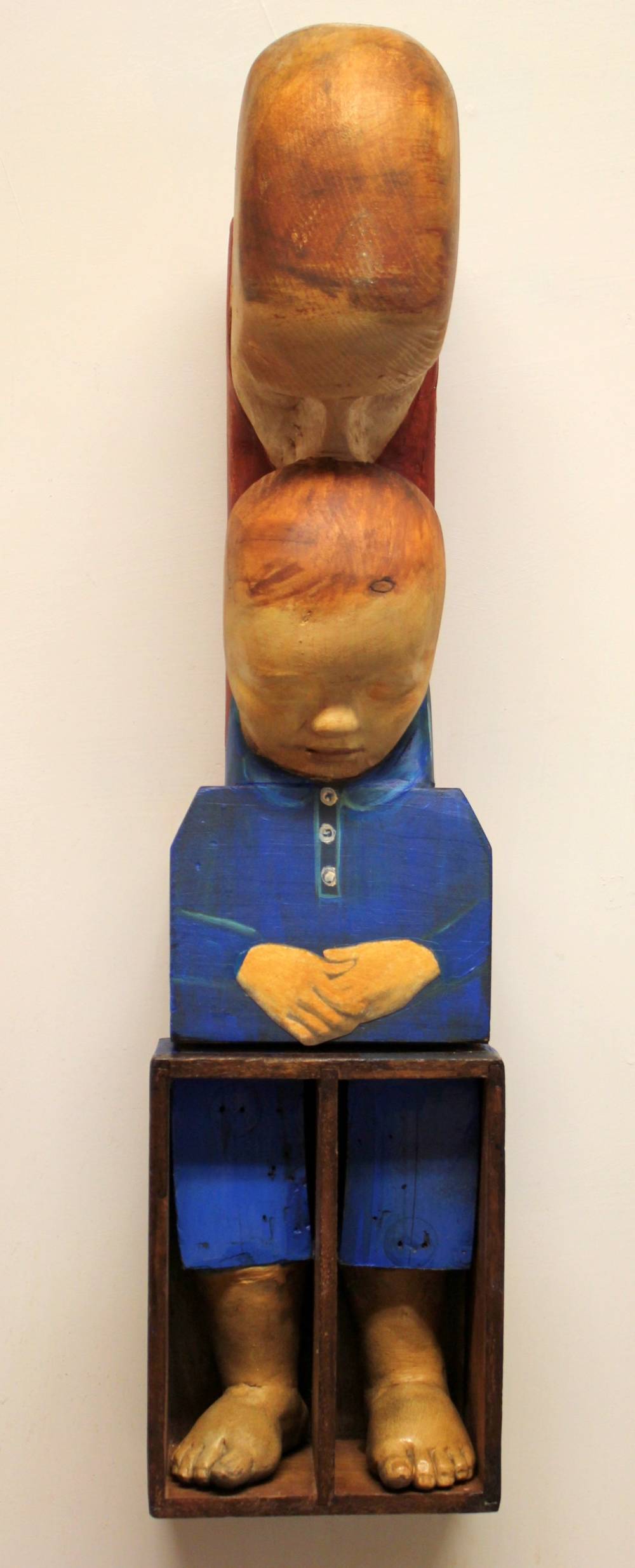
But it’s better now? It’s way better! It’s really beautiful. I’ve got one on the way to high school next year. They are independent and they’ve lived with mom being who she is from day one. I go into their schools and work in their classrooms. We make big, huge murals. We make sculpture projects together. I do this because not only do I want to set an example for my children, but I want other children to say, “Oh, she’s Leo’s mom! She’s an artist, and she’s coming to our school!” And this is not an ego thing. I want them to see that when you have something important to share, do it. Go in and do it. Now I am another image that they can carry with them in their life: She was an artist, but she was also Leo’s mom. I think it’s pretty badass. Otherwise, they go to museums not knowing who the people were that made the artwork.
What are some of the projects you are working on right now? I am working on a 21-foot-long by five-foot-high mural with my son’s eighth grade class. There are 56 kids. It’s about celebrating the arts. It’s a depiction of a big parade of theater, music (there are two flutists in there. It’s great), dance, abstract community buildings in the background, and it’s going to go in their auditorium. It’s really cool. It’s empowering. A lot of these kids haven’t done this before, and it’s new to me too.
In my studio, I’m working on these very small scale figure sketches. I call them life sketches. There are a hundred of them, and they can be anywhere between five to 12 inches. They’ve been coming out like crazy, and they’re really raw. They are mothers with children, they are fighters, they are people mourning. They are just little fragments of humanity. They just start exploding out of my head and they’re all over the table.
Next week I am going to start a big commission for a Subaru dealership. Once in awhile I get a statue commission, and that really helps pay the bills.
Are your kids artists? Olivier, the 13-year-old, is a pretty awesome guitarist. And the little guy, Leo, is totally and artist in his human spirit. But right now he’s too into being nine and being a rough dude to see it and tap into it. I don’t push him, but the stuff he used to make as a little guy blew my mind. I never instructed him, and I never guided him, I would just encourage him.
I love watching little ones tap into themselves in their own way. Everybody automatically assumes that my children must be creative because mom is an artist. And they are already finding their own art forms. It’s really great.
What do they say about mom being an artist, coming into their schools? In the beginning they were a bit nervous, because I have to be the teacher, saying things like, “Please be quiet when I’m speaking.” But 90 percent of the time, the school kids love it. They write thank you letters, saying “When are you coming back?!” But my kids are proud. I want them to observe it, absorb it, and let it sit with them over the years.
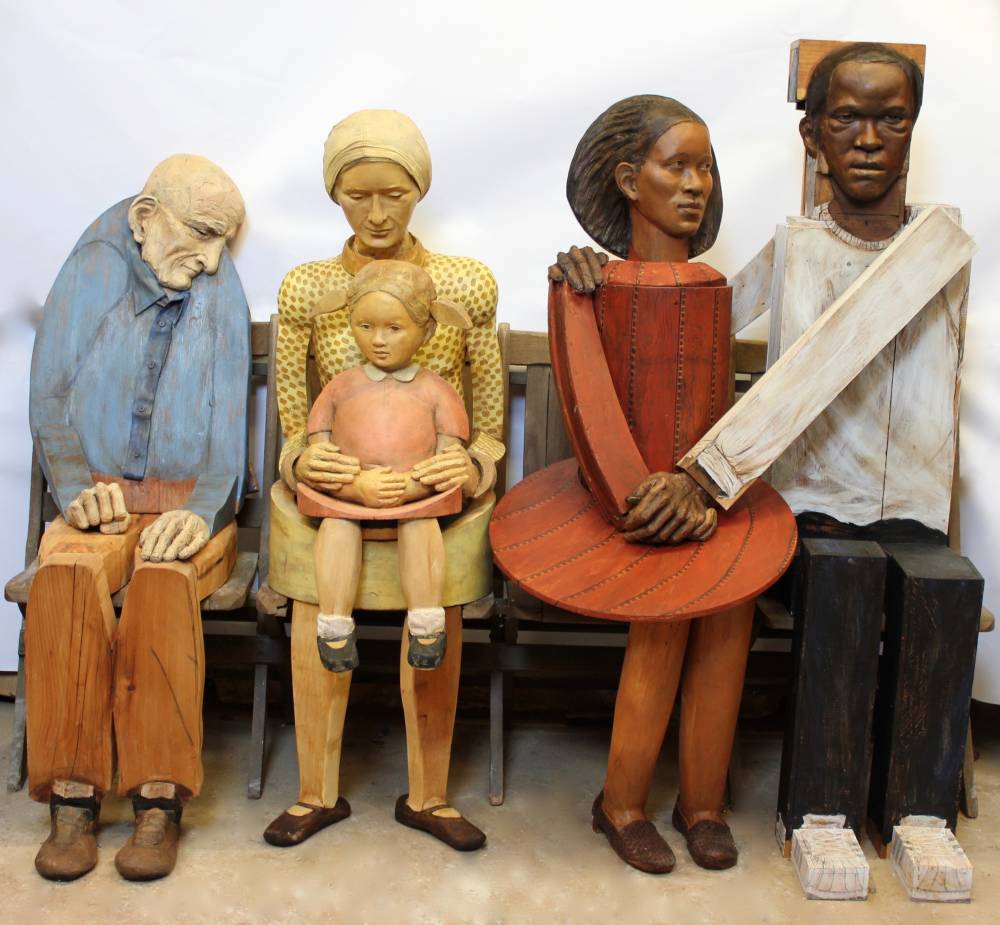
What opportunities has your career given you that you may not have had if you weren’t an artist? After 26 years of doing this, the most profound thing is how I connect with people in my community and abroad. I love being around people, but then I also need alone time in my studio. But the nature of the humanistic qualities of my work, the storytelling quality of my work, has helped me connect to very meaningful people and causes.
One of the biggest things in the last decade has been working with refugees that have resettled in Connecticut. Mostly it started out with working with artists from other countries who would come here as refugees. For example, there was a famous Congolese maskmaker, and I provided him the clay to use. He would come to my studio and we would talk about life and how to raise children, and how it works to be an artist in this country.
It has slowly evolved. Now I have a godson from Rwanda. I have worked with Syrian and Iraqi artists. Incredible, resilient human beings who are deeply beautiful people. Their stories are amazing. They are hard working. They are gorgeous human spirits, and their stories and will to survive and be a part of this human experience has affected my work in profound ways. And it has allowed me to give back in that nurturing way that is innate in me.
"Art is a vehicle that allows us to connect to one another nonverbally. You feel something different when you hear a piece of music, or you look at a piece of visual art…"
Two years ago, I curated an exhibition of all refugee artists at the New Haven Museum. That was beautiful, really beautiful. Any time there is someone who is willing to share their story, painful or otherwise, and through a vehicle that I know best—art making—it just gives me goosebumps. First of all, it’s what I understand. Art is a vehicle that allows us to connect to one another nonverbally. You feel something different when you hear a piece of music, or you look at a piece of visual art, and it might be someone from the Congo who made it, but you feel something from it.
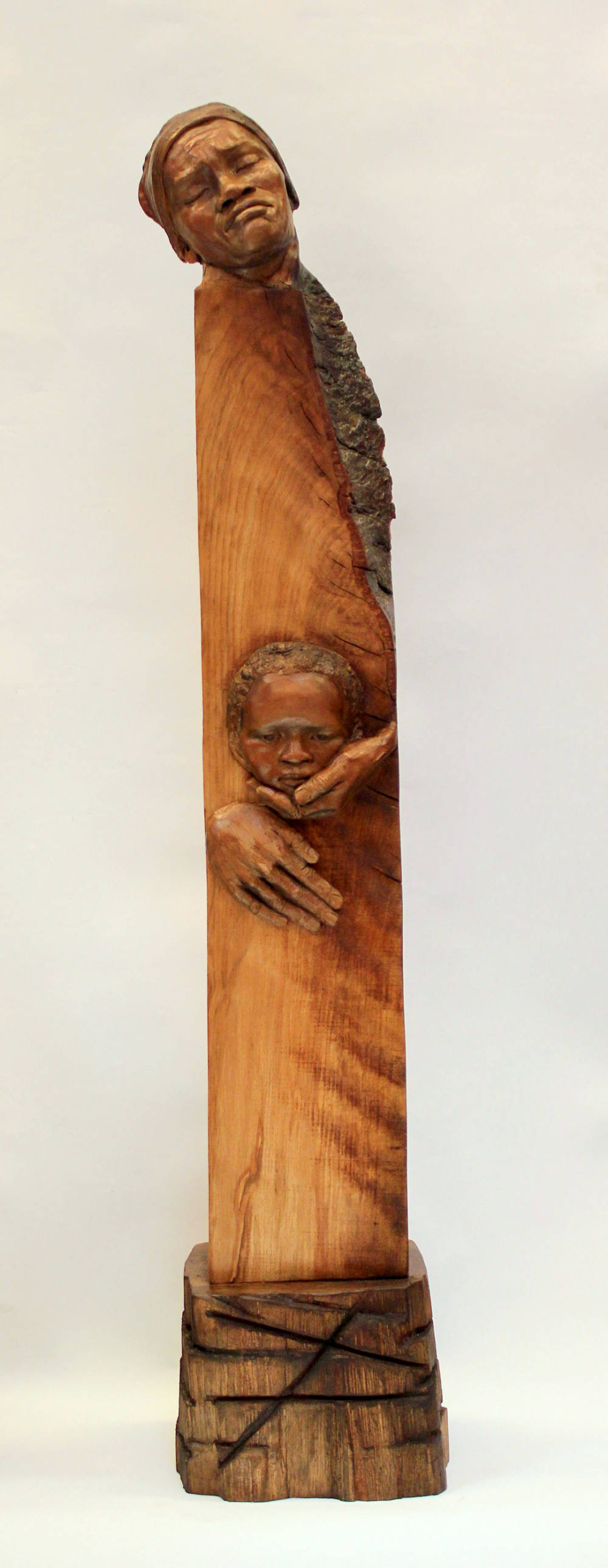
What does your husband do? He’s a scientist! He’s a biologist and a physicist, but when he took my sculpture class, I was like, Dang! He can sculpt! He’s from the French part of Switzerland and he showed me some of his stone carvings from when he was a kid. They are beautiful. We connected in that way. It’s funny: scientist and artist. We’re not that different, in that we’re coming up with new ideas and different concepts about the unknown, but our approach is so different. I am super prolific, and I am hyper as hell. So I’ll go into the studio and I’ll make, I don’t know, four sculptures in a week and he’s like, “Susan, you don’t know how lucky you are! I have been working on this grant for two years!” So we laugh about it.
What are you excited about for the future, in your work or in your family? Melodrama aside, there’s not a day that goes by that my kids don’t make me pause. I don’t show them because they are a bit more self-critical of themselves now. But it’s like every mother’s dream, where something you’ve been telling them about, or trying to slide in there, about life, about the way to look at the world, and they say something on their own that is in tandem with what you’ve been telling them. They are their own human beings, and they will be different from me, and they’ll be different from their father. But it sure is nice to hear their young minds growing and taking on compassionate and responsible views of the world. It’s exciting because I know it’s only going to continue to grow as they can articulate themselves more.
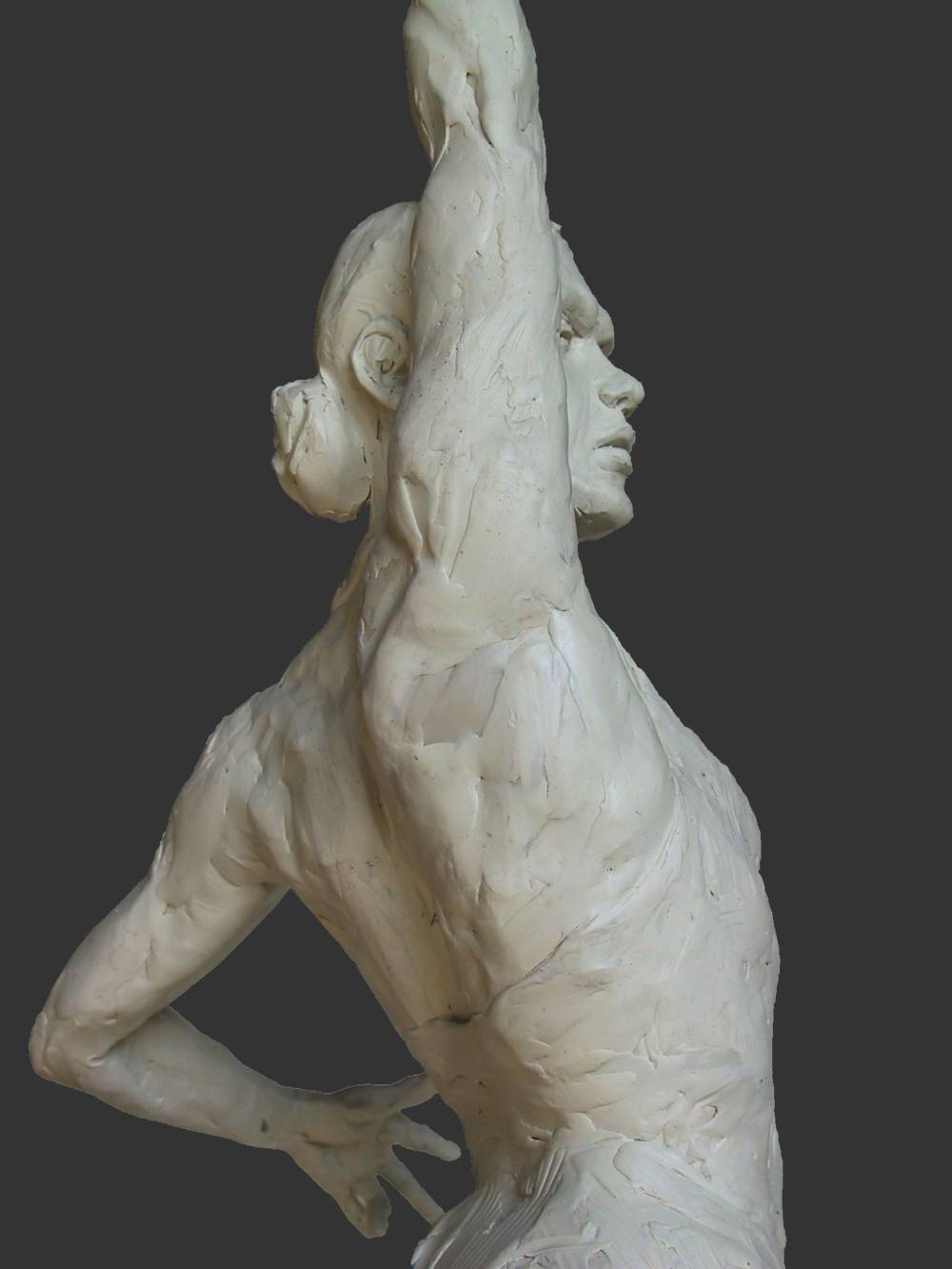
As far as art, there is a power that comes from just being honest with myself. I know that no matter what, I’m always going to change and my art will always change. I am grateful that I did not get early success in my art, and that I had children early on. I’m glad that I didn’t get into a fancy New York City art gallery early on, because I think I would have been handed a card that said, “Ok, you’re done. Now just produce this kind of work for the next 20 years.”
I have struggled a lot, but each time I struggle something awesome comes out of it. A new series will evolve because there’s a tickling inside of me, or a thing I want to express, and I try it and I don’t have to answer to anyone but myself.
"Don’t, for a second, give up…Go and find that internal strength to hold on. Find something every day."
What inspires you? The daily grind of everyday. Sitting on a city bus and observing my fellow people. It’s smelly and stinky, and hard and sad and beautiful. Watching a hawk fly over my studio and catch me off guard. The growth of my little ones. The wonder of children and older people coming into my studio. Having the electrician who is coming to fix something stop when he opens the door, and his mouth drops and he says “Holy shit!” Art is not just for some people. It’s for all of us. Those connections we make to people are super inspiring to me.
It’s a beautiful thing to be alive. Amen, girl!
What advice do you have for other Mother Makers? Don’t, for a second, give up. Don’t think, “I’ll do it in five years.” Find a little space to do what you need, even if it’s an internal space to daydream or cultivate an idea. Take notes. When you have babies, I realize for musicians and sometimes for visual artists, the actual physicality that’s really just really difficult. And you’ll have that space again. You will. But in the meantime, don’t press pause for too long. I’ve seen it too many times before, and had that conversation about being an artist, but going 20 years without making, but… And there’s something that drops in my chest because I know the stresses behind being a mom and eeking out a living. Go and find that internal strength to hold on. Find something every day.
